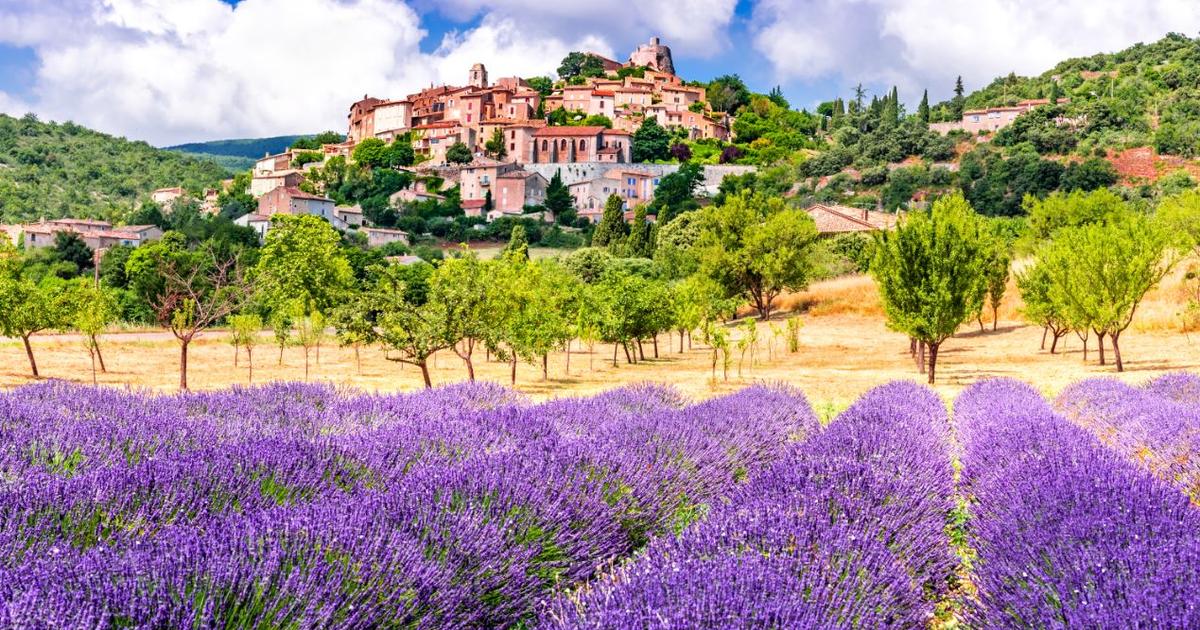Provence emerges from the mists of Antiquity.
Its name comes from the word “Provincia” by which the Romans designate the first territories conquered in Gaul.
Shortly after their arrival, in 123 BC.
BC, they founded
Aquae Sextia,
future Aix-en-Provence.
Covering Dauphiné and Languedoc, this Roman province would soon be called Narbonnaise but the name “Provence” would be used again from the 9th century.
To discover
Stays in France: weekends, hotels and tailor-made stays from our partners
With this ancient heritage, which is based on a remarkable built heritage, the region becomes the antechamber of Italy in the eyes of travelers from the North.
Since the Renaissance, they have come to visit, enthusiastically, the Orange theater and the arenas of Arles and Fréjus.
The mild climate will also contribute to its success.
A mild winter which motivated the first stays of winterers in the 18th century, some concerned about their health.
Hyères, for example, was at the time one of the first resorts to welcome winter residents and tuberculosis patients.
The mild weather also benefits crops: the olive tree, of course, but also exotic plants, palm trees, mimosas, eucalyptus and agaves which acclimatize wonderfully on the coast.
Also read: What to do on the Côte d'Azur in winter?
Our best activities
Without Nice and Avignon
“
For historians, Provence is that before the Revolution: that which belongs to the Angevins of Naples, united with the Kingdom of France in 1481
”, specifies Régis Bertrand, professor emeritus of modern history at Aix-Marseille University, author from the book
Provence from the origins to the present day*
.
A Provence with complicated borders which includes neither the County of Nice, which was given to the House of Savoy in 1388, nor the Comtat Venaissin and Avignon belonging to the Papal States since the 13th and 14th centuries respectively.
On the other hand, today it includes enclaves currently in Drôme (the County of Grignan, Séderon and Val d'Oule) at the origin of the Drôme Provençale appellation.
A Provence therefore included, with a few exceptions, between two rivers, the Rhône to the west and the Var to the east, and the Mediterranean Sea to the south.
To the north, it is bordered by the first mountains of the Hautes-Alpes which extend more or less beyond the Ubaye and Durance rivers.
Also read: The 10 best hotels in Aix-en-Provence
Colors and light
In the harbor of Marseille, the Château d'If, dear to the readers of "The Count of Monte Cristo"... Kavalenkava / stock.adobe.com
But more than the borders, it is probably the artists who best sketch the portrait of Provence.
In the middle of the 19th century, regional painters, led by Adolphe Monticelli, opened the way for the greatest.
Captivated by the colors and light of Provence, Vincent Van Gogh, Paul Cézanne (from Aix-en-Provence), Paul Signac, Georges Braque and Raoul Dufy set up their easels in the region.
The olive groves of the Alpilles, the Sainte-Victoire mountain, the port of l'Estaque, Saint-Tropez can be found in museums around the world.
The most famous painter of the 20th century, Picasso, will settle in Vallauris, Cannes, Vauvenargues (near Aix-en-Provence) and Mougins.
Read alsoVar: five little-known villages to discover in the hinterland
Sublimated by painters, Provence is also celebrated by writers.
Since its publication in 1844,
The Count of Monte Cristo
attracted many visitors to the Château d'If, in the harbor of Marseille and in the wake of Edmond Dantès.
But it is above all the southern authors who, through their loving vision, will make their region shine in literature.
Paul Arène in Sisteron, René Char in Vaucluse, Marcel Pagnol around Marseille and Jean Giono in the Alpes de Haute-Provence.
With
Les Lettres de mon moulin
, Alphonse Daudet left his mark on popular literature.
With a brush or a pen, everyone has shaped a certain myth of Provence, alive, luminous, radiating an art of living which never ceases to attract travelers.
To read
*Provence from the origins to the present day
, by Régis Bertrand.
History of the provinces collection, Éditions Ouest-France (2014).
In video -
Marcel Pagnol: his grandson's fight to keep his castle alive

